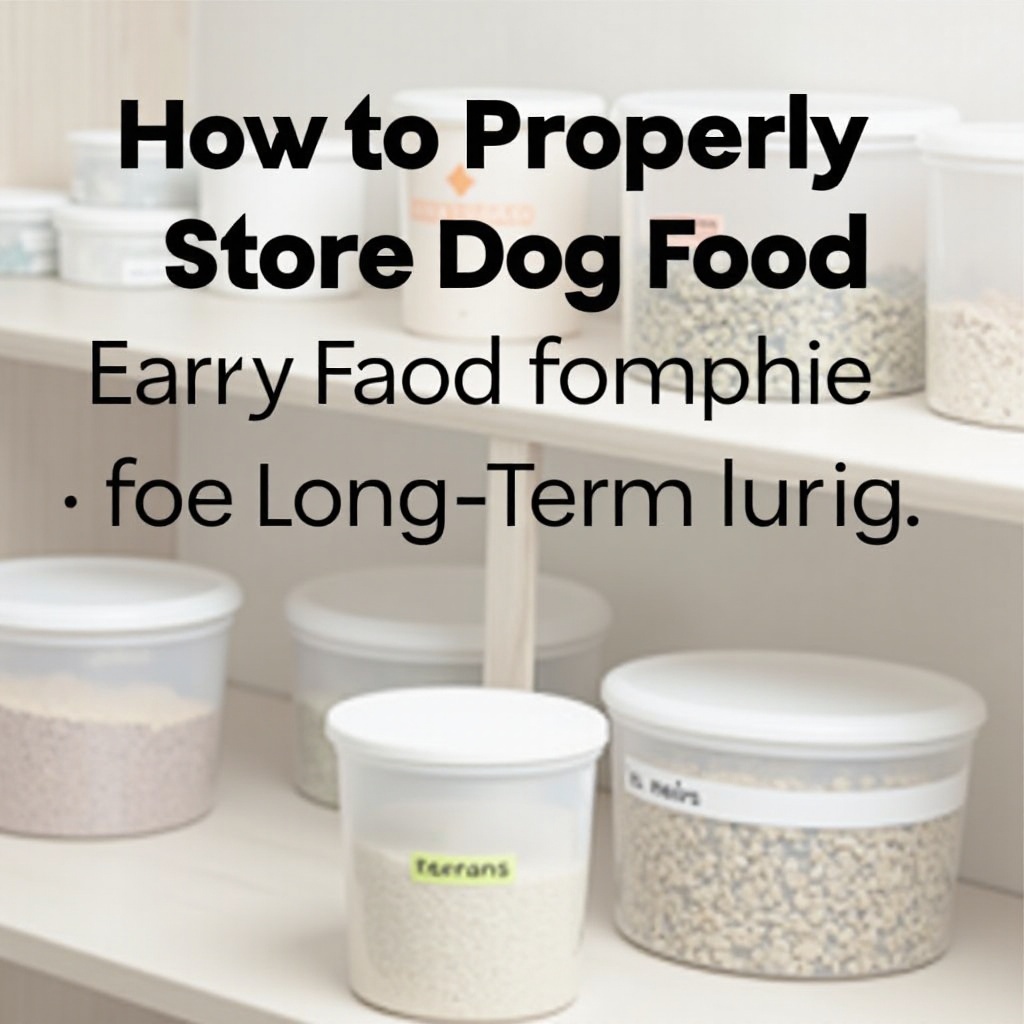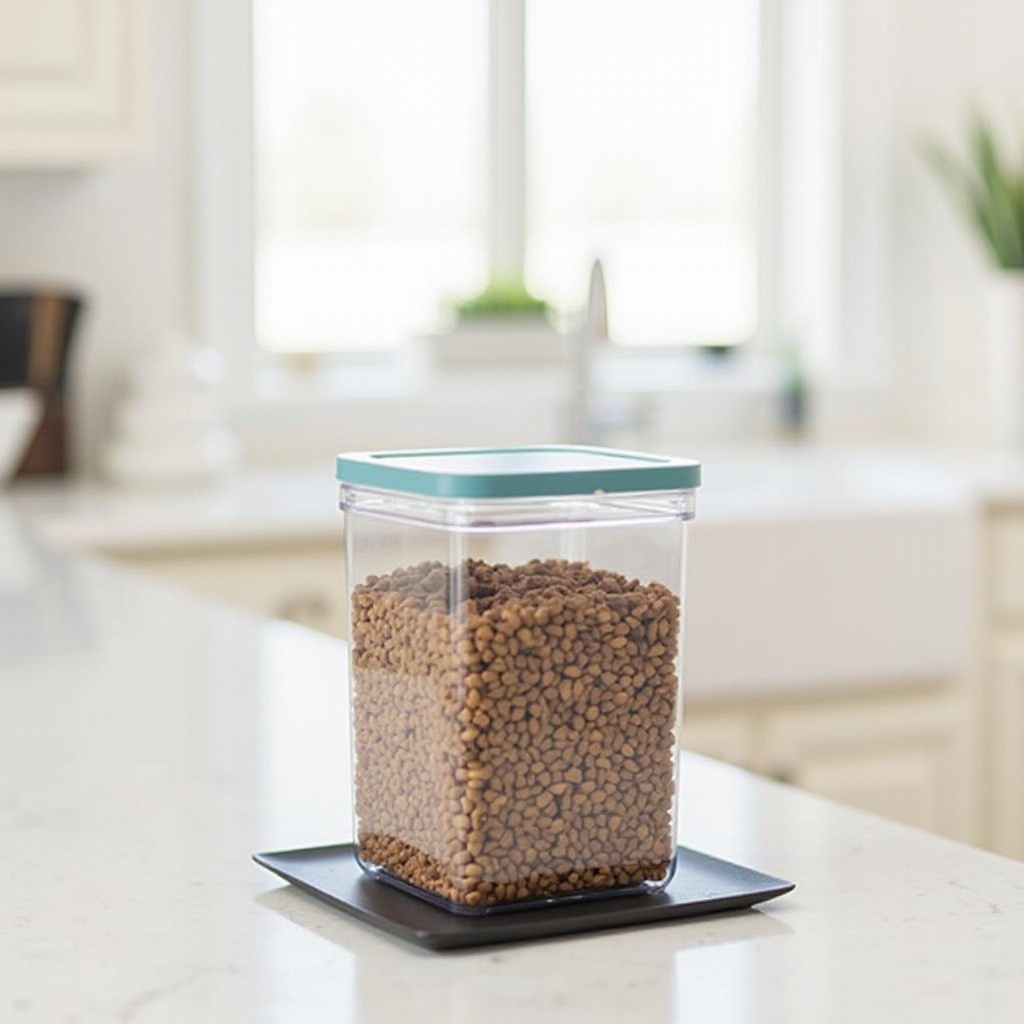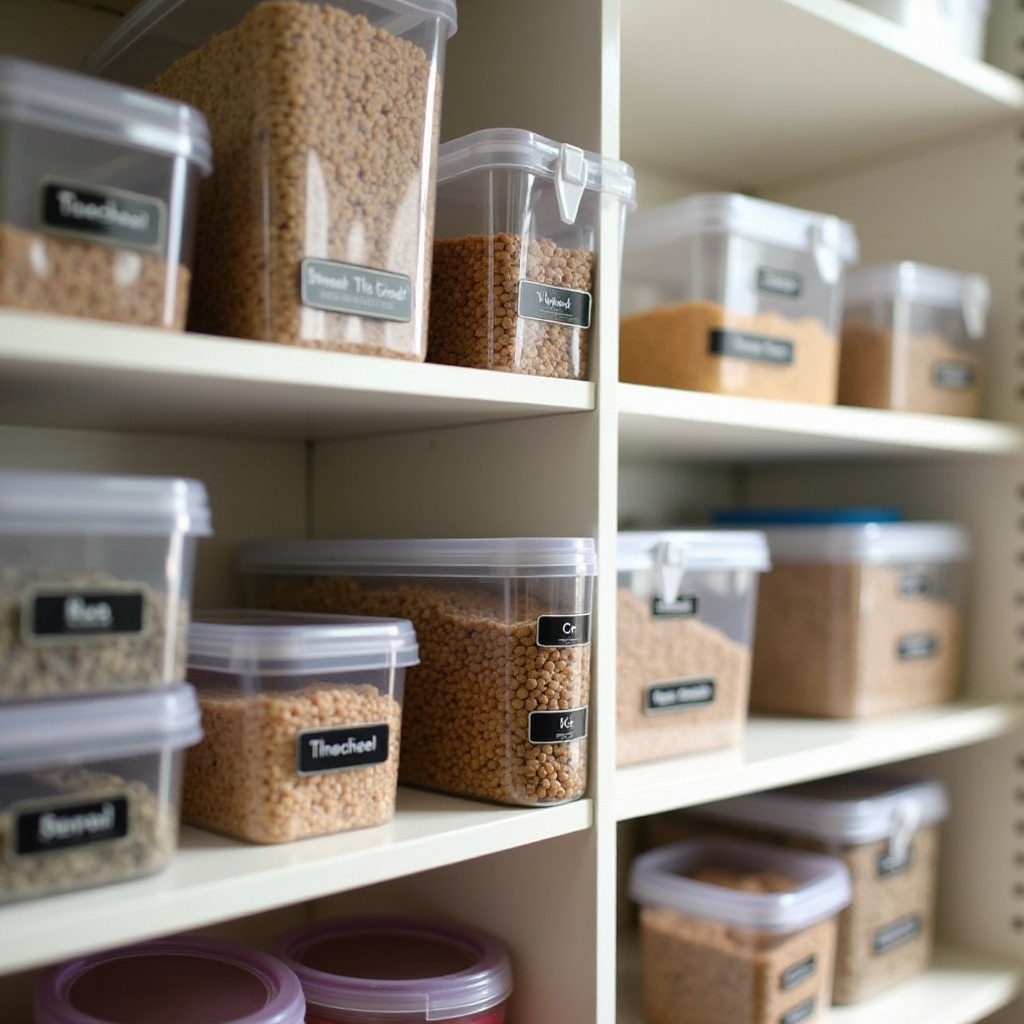Introduction
Proper storage of dog food is crucial to ensure your furry friend gets the best nutrition safely and consistently. Poor storage can lead to spoilage, degradation of nutrients, and potential health risks for your dog. Knowing the right way to store dog food long-term is, therefore, a vital part of pet care. This blog will provide comprehensive insights into choosing the right container, maintaining the ideal storage environment, implementing safe practices, and more.

Choosing the Right Storage Container
Selecting the correct container is the first step in ensuring your dog’s food stays fresh and safe for a long time.
Types of Containers: Plastic, Metal, and Glass
Different types of containers serve varying needs for dog food storage. Plastic containers are popular due to their affordability and lightweight nature. Metal containers, often made of stainless steel, offer durability and resistance to pests. Glass jars provide an airtight seal, preserving freshness but can be more fragile and less convenient for larger quantities.
Pros and Cons of Each
- Plastic Containers:
- Pros:
- Lightweight
- Affordable
- Easily available
- Cons:
- May absorb odors
- Risk of BPA contamination if not BPA-free
-
Can be chewed through by pests if not securely closed
-
Metal Containers:
- Pros:
- Durable and long-lasting
- Pest-resistant
- Does not absorb odors
- Cons:
- Heavier than plastic
- Higher cost
-
Can rust if not maintained properly
-
Glass Containers:
- Pros:
- Excellent for sealing out air and moisture
- Non-toxic and easy to clean
- Does not absorb odors
- Cons:
- Fragile
- More expensive
- Heavy, especially for large quantities
Tips for Selecting the Best Container
When choosing a container:
– Ensure it is airtight and moisture-resistant.
– Opt for BPA-free plastic if selecting plastic.
– Consider size and ease of handling based on your storage needs.
– Prioritize materials that do not retain odors or flavors.

Storage Environment
Where you store your dog’s food is just as important as the container you choose. The environment plays a significant role in maintaining the food’s freshness and preventing spoilage. After choosing the right container, the next step is to find an appropriate storage environment.
Ideal Temperature and Humidity Levels
Dog food should be stored in a cool, dry place. The ideal temperature is below 80°F (27°C). High temperatures can degrade nutrients and cause fats to rancidify. Humidity should be low as moisture can lead to mold growth and spoilage.
Avoiding Direct Sunlight
Direct sunlight can heat up the food container, leading to the same issues caused by high temperatures. It’s best to store dog food in a dark or shaded area to prevent nutrient breakdown and spoilage.
Keeping Pests Away
Pests are a common issue in food storage. Ensure the storage area is clean and free of food residues.
– Use containers with a tight seal to keep pests out.
– Place food containers on shelves or raised platforms rather than on the floor.
– Regularly inspect the storage area for signs of infestation.
Safe and Hygienic Practices
Maintaining hygiene is crucial to preserving the quality and safety of dog food over time.
Cleaning the Storage Container
Regularly clean the storage container to prevent the build-up of oils and food residue that can harbor bacteria.
– Use warm, soapy water and thoroughly rinse before drying.
– Ensure the container is completely dry before refilling to avoid moisture build-up.
Regular Checking and Rotating Stock
Regular checks and rotation of stock help maintain food freshness.
– Check for signs of spoilage, including unusual odors, discoloration, or mold.
– Adhere to a first-in, first-out system to ensure older food is used first.
Signs Your Dog Food Has Gone Bad
Watch for signs indicating the food may have spoiled:
– A rancid or off smell.
– Changes in color or texture.
– Presence of mold or visible insects.
Special Considerations
Different types of dog food require specific storage methods.
Storing Wet vs. Dry Dog Food
- Dry Dog Food:
- Best stored in an airtight container in a cool, dry place.
-
Check expiration dates and store three to six months’ worth of food.
-
Wet Dog Food:
- Refrigerate any opened cans and use within three days.
- Unopened cans can be stored in a cool, dry pantry.
Homemade Dog Food Storage Tips
For those preparing homemade dog food:
– Portion the food before cooling it down to room temperature.
– Use airtight containers or vacuum-sealed bags.
– Store in the refrigerator for short-term use (up to five days) or freezer for long-term use (up to six months).
Storing Raw Dog Food
Raw food storage needs to be handled with more care:
– Store in airtight containers in the freezer.
– Thaw in the refrigerator and use within three days.
– Avoid re-freezing thawed food to maintain quality and safety.

Conclusion
Proper long-term storage of dog food is essential for your pet’s health and well-being. By selecting the right container, maintaining an ideal environment, and following safe practices, you can ensure your dog gets fresh, nutritious meals consistently. Paying attention to these details not only extends the life of the food but also contributes to better health outcomes for your furry friend.
Frequently Asked Questions
How long can I store unopened dog food?
Unopened dry dog food can be stored for up to 12 months, while unopened canned wet food can last up to 2 years if stored in a cool, dry place.
Is it safe to store dog food in the garage?
Storing dog food in the garage can be problematic if the temperature fluctuates significantly or if pests are a concern. If you do, ensure it’s in a sealed container off the floor and in a temperature-controlled environment.
Can I freeze dog food for long-term storage?
Yes, you can freeze dog food to extend its shelf life, especially wet or homemade recipes. Ensure it’s in airtight, freezer-safe containers or vacuum bags for best results.
